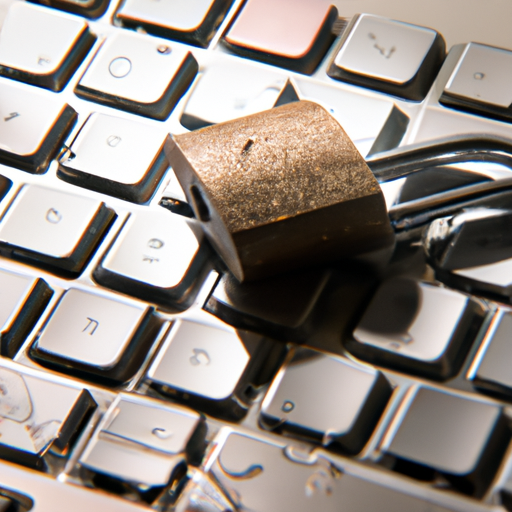What Is The Role Of A Crisis Communication Team During A Cybersecurity Incident?
In the fast-paced digital world we live in, the threat of cyberattacks is a constant concern. When a cybersecurity incident occurs, it is crucial to have a competent crisis communication team in place to handle the situation effectively. The role of this team is pivotal in managing the aftermath of a cyber attack, ensuring clear and timely communication to stakeholders and the public, ultimately safeguarding the reputation and trust of the affected organization. Understanding the importance of their role and the strategies they employ is essential for any company navigating the treacherous waters of cybersecurity incidents. During a cybersecurity incident, the role of a crisis communication team is crucial in managing the flow of information and ensuring effective communication both internally and externally. A well-prepared and coordinated team can help mitigate the impact of the incident, maintain the trust of stakeholders, and protect the reputation of the organization. This article will explore the main responsibilities of a crisis communication team during a cybersecurity incident, providing a comprehensive understanding of their role and how they contribute to the overall incident response effort.
1. Developing and implementing a communication strategy
Developing and implementing a comprehensive communication strategy is the foundation of effective crisis communication during a cybersecurity incident. This involves assessing the situation and stakeholders, defining key messages, determining the appropriate communication channels, and establishing roles and responsibilities within the team.
1.1. Assessing the situation and stakeholders
The crisis communication team must first assess the severity and impact of the cybersecurity incident. This includes understanding the nature of the incident, identifying the affected systems or data, and evaluating the potential consequences for stakeholders such as customers, employees, and partners. By gaining a clear understanding of the situation, the team can develop an appropriate communication strategy tailored to the specific incident.
1.2. Defining key messages
Once the situation is assessed, the crisis communication team must define key messages that will guide their communication efforts. These messages should be clear, concise, and consistent, conveying important information about the incident and its impact on stakeholders. By establishing key messages, the team can ensure that all communications align with the organization’s overall objectives and messaging.
1.3. Determining communication channels
The crisis communication team must determine the most effective communication channels for reaching different stakeholders. This may include traditional media channels, such as press releases and media interviews, as well as digital channels, such as social media platforms and the organization’s website. By understanding the preferences and habits of stakeholders, the team can select the most appropriate channels to disseminate information and keep stakeholders informed.
1.4. Establishing roles and responsibilities
To ensure a coordinated response, the crisis communication team must establish clear roles and responsibilities within the team. This includes designating a spokesperson who will serve as the main point of contact for media inquiries and external communications. Additionally, team members should be assigned specific tasks, such as monitoring social media channels, drafting communication materials, or coordinating internal communications. By clearly defining roles and responsibilities, the team can work together efficiently and effectively during the incident.
2. Ensuring timely and accurate information dissemination
Timely and accurate information dissemination is crucial during a cybersecurity incident to keep stakeholders informed and avoid rumors or misinformation. The crisis communication team plays a key role in actively monitoring the situation, gathering accurate information from technical teams, verifying and validating information, and communicating updates and developments to stakeholders.
2.1. Actively monitoring the situation
The crisis communication team must closely monitor the cybersecurity incident, staying updated on any new developments or changes. This includes monitoring reports from technical teams, staying in communication with cybersecurity and IT teams, and being aware of any emerging risks or threats. By actively monitoring the situation, the team can provide timely updates to stakeholders and address any new concerns that may arise.
2.2. Gathering accurate information from technical teams
During a cybersecurity incident, technical teams are responsible for investigating and resolving the issue. The crisis communication team must collaborate closely with these teams to gather accurate and up-to-date information about the incident. This includes understanding the technical details of the incident, the systems or data affected, and any potential implications for stakeholders. By working closely with technical teams, the crisis communication team can ensure that the information they provide to stakeholders is accurate and reliable.
2.3. Verifying and validating information
Before communicating any information to stakeholders, the crisis communication team must verify and validate the information received from technical teams. This involves cross-referencing information with multiple sources, conducting fact-checking, and ensuring that the information is accurate and reliable. By verifying and validating information, the team can prevent the spread of misinformation and Maintain the trust of stakeholders.
2.4. Communicating updates and developments
Keeping stakeholders informed is a critical responsibility of the crisis communication team. The team must regularly communicate updates and developments regarding the cybersecurity incident, providing accurate and timely information to stakeholders. This can be done through various communication channels, such as press releases, website updates, social media posts, and direct communication with key stakeholders. By providing regular updates, the team can manage expectations, address concerns, and demonstrate transparency in their communication efforts.
3. Coordinating internal communication efforts
In addition to external communication, the crisis communication team must coordinate internal communication efforts to ensure that employees and relevant internal stakeholders are informed and supported during the cybersecurity incident. This includes informing employees about the incident, providing guidance and instructions, and facilitating communication within the organization.
3.1. Informing employees and relevant internal stakeholders
The crisis communication team must inform employees and relevant internal stakeholders about the cybersecurity incident. This includes communicating the nature of the incident, its impact on the organization, and any necessary actions or precautions that need to be taken. By keeping internal stakeholders informed, the team can ensure a coordinated response and minimize confusion or panic within the organization.
3.2. Providing guidance and instructions
During a cybersecurity incident, employees and internal stakeholders may require guidance and instructions on how to respond to the situation. The crisis communication team plays a vital role in providing this guidance, outlining the necessary steps to be taken to prevent further damage or mitigate risks. This can include instructions on changing passwords, implementing additional security measures, or reporting any suspicious activities. By providing clear and concise guidance, the team can ensure that internal stakeholders are equipped to respond effectively to the incident.
3.3. Facilitating communication within the organization
Effective internal communication is essential during a cybersecurity incident to ensure a coordinated response. The crisis communication team must facilitate communication within the organization, creating channels for employees to ask questions, seek support, and share relevant information. This can be done through email updates, internal messaging platforms, or dedicated communication channels. By facilitating communication, the team can foster collaboration, address concerns, and maintain employee engagement during the incident.
4. Managing media relations
During a cybersecurity incident, managing media relations is a critical responsibility of the crisis communication team. The team must designate a spokesperson, develop media communication materials, respond to media inquiries, and monitor media coverage to ensure accurate and balanced reporting.
4.1. Designating a spokesperson
The crisis communication team must designate a spokesperson who will serve as the main point of contact for media inquiries and external communications. This individual should have strong communication skills, media relations experience, and a deep understanding of the incident and its implications. By designating a spokesperson, the team can ensure that all media interactions are coordinated, consistent, and aligned with the organization’s messaging.
4.2. Developing media communication materials
To effectively manage media relations, the crisis communication team must develop media communication materials that provide accurate and concise information about the incident. This may include press releases, media statements, talking points, and frequently asked questions (FAQs). These materials should be prepared in advance to ensure a timely response to media inquiries and to provide journalists with accurate information that can be disseminated to the public.
4.3. Responding to media inquiries
When media inquiries are received, the crisis communication team must promptly respond to them in a professional and consistent manner. This involves providing accurate and concise answers to questions, addressing any concerns or misconceptions, and ensuring that the organization’s messaging is conveyed effectively. By responding to media inquiries, the team can shape the narrative surrounding the incident and maintain control over the information that is communicated to the public.
4.4. Monitoring media coverage and correcting inaccuracies
Monitoring media coverage is essential during a cybersecurity incident to identify any inaccuracies or misinterpretations in reporting. The crisis communication team must continuously monitor media channels, social media platforms, and online news sources to stay aware of the coverage and address any inaccuracies that may arise. By correcting inaccuracies, the team can ensure that accurate information is being communicated to the public and maintain the organization’s reputation.
5. Handling public inquiries and concerns
During a cybersecurity incident, the crisis communication team must be prepared to handle public inquiries and concerns. This includes establishing communication channels for public inquiries, providing accurate and consistent information to the public, and addressing concerns to alleviate fears and maintain stakeholder trust.
5.1. Establishing communication channels for public inquiries
The crisis communication team must establish dedicated communication channels for the public to inquire about the incident and seek information. This may include a dedicated hotline, an email address, or a web form for submitting inquiries. By providing designated communication channels, the team can centralize the management of public inquiries and ensure that all questions or concerns are addressed promptly and efficiently.
5.2. Providing accurate and consistent information to the public
When responding to public inquiries, the crisis communication team must ensure that accurate and consistent information is provided. The team should refer to the established key messages and communicate information that has been verified and validated. By providing accurate and consistent information, the team can prevent the spread of rumors or misinformation and maintain stakeholder trust during the incident.
5.3. Addressing concerns and alleviating fears
Public inquiries during a cybersecurity incident may be accompanied by concerns and fears from stakeholders. The crisis communication team must be empathetic and responsive when addressing these concerns, providing reassurance and taking appropriate actions to alleviate fears. This may involve explaining the steps being taken to mitigate risks, offering support to affected individuals, or providing resources to address potential harm. By addressing concerns and alleviating fears, the team can demonstrate their commitment to stakeholder well-being and maintain trust in the organization.
6. Monitoring and managing social media channels
Social media plays a significant role in shaping public opinion and disseminating information during a cybersecurity incident. The crisis communication team must monitor social media platforms, respond to inquiries and concerns, and share updates and information to maintain an open line of communication with stakeholders.
6.1. Monitoring social media platforms for mentions and discussions
The crisis communication team must actively monitor social media platforms for mentions and discussions related to the cybersecurity incident. This includes monitoring hashtags, keywords, and relevant accounts to identify any emerging trends or concerns. By staying aware of social media conversations, the team can respond promptly to inquiries, correct misinformation, and address any emerging issues.
6.2. Responding to inquiries and concerns on social media
When inquiries or concerns are raised on social media platforms, the crisis communication team must respond in a timely and appropriate manner. This may involve acknowledging the inquiry or concern, providing accurate information, and directing individuals to the appropriate communication channels for further support or assistance. By responding on social media, the team can demonstrate transparency and maintain an open line of communication with stakeholders.
6.3. Sharing updates and information on social media
Social media platforms can be valuable channels for sharing updates and information during a cybersecurity incident. The crisis communication team should regularly update social media accounts with accurate and timely information, keeping stakeholders informed of the latest developments and actions being taken. This can help to manage expectations, address concerns, and ensure that stakeholders are receiving the most up-to-date information directly from the organization.
7. Collaborating with cybersecurity and IT teams
Collaboration between the crisis communication team and cybersecurity and IT teams is essential during a cybersecurity incident. The crisis communication team must liaise with these technical teams, understand the technical aspects and implications of the incident, and align their communication efforts with the technical actions being taken.
7.1. Liaising with cybersecurity and IT teams
The crisis communication team must establish open lines of communication with the cybersecurity and IT teams involved in the incident response. This includes regular updates on the progress of the incident, understanding the technical details surrounding the incident, and coordinating communication efforts to ensure consistency and accuracy. By building strong relationships with technical teams, the crisis communication team can stay informed and provide accurate information to stakeholders.
7.2. Understanding technical aspects and implications
To effectively communicate about the cybersecurity incident, the crisis communication team must have a solid understanding of the technical aspects and implications of the incident. This may involve learning about the methods used in the attack, the vulnerabilities exploited, and the steps being taken to mitigate risks or restore systems. By understanding the technical aspects, the team can communicate with credibility and provide accurate information to stakeholders.
7.3. Aligning communication with technical actions
The crisis communication team must align their communication efforts with the technical actions being taken by the cybersecurity and IT teams. This includes coordinating messaging to ensure consistency and accuracy, providing updates on technical progress, and communicating any potential impact on stakeholders. By aligning communication with technical actions, the team can present a cohesive and coordinated response, conveying confidence in the organization’s ability to manage the incident.
8. Providing guidance and support to affected individuals or stakeholders
During a cybersecurity incident, the crisis communication team must provide guidance and support to affected individuals or stakeholders. This includes offering assistance and guidance, addressing concerns, and ensuring that necessary resources and support are provided to those affected by the incident.
8.1. Offering assistance and guidance to affected individuals
For individuals directly affected by the cybersecurity incident, such as customers whose data may have been compromised, the crisis communication team must offer assistance and guidance. This may involve providing step-by-step instructions on what individuals should do to protect their information, offering credit monitoring services, or directing affected individuals to support resources. By offering assistance and guidance, the team can help alleviate concerns and provide practical solutions to those impacted by the incident.
8.2. Addressing concerns and mitigating potential harm
Affected individuals or stakeholders may have concerns about the potential harm or consequences of a cybersecurity incident. The crisis communication team must address these concerns, providing accurate and clear information about the steps being taken to mitigate risks and prevent further harm. This may involve explaining the security measures in place, the detection and response capabilities of the organization, and any support services available to affected individuals. By addressing concerns and mitigating potential harm, the team can help restore confidence and trust in the organization.
8.3. Ensuring necessary resources and support are provided
The crisis communication team must ensure that necessary resources and support are provided to affected individuals or stakeholders. This may include establishing dedicated helplines, creating support websites or portals, or offering counseling services for individuals impacted by the incident. By providing the necessary resources and support, the team can demonstrate their commitment to stakeholder well-being and assist in the recovery process.
9. Conducting post-incident analysis and reporting
After the cybersecurity incident has been resolved, the crisis communication team must conduct a post-incident analysis and reporting to evaluate the effectiveness of their communication efforts and identify areas for improvement. This analysis is crucial for learning from the incident and enhancing future incident response strategies.
The crisis communication team should review the communication strategy, assess the effectiveness of key messages, evaluate the performance of different communication channels, and gather feedback and insights from stakeholders. By conducting a comprehensive post-incident analysis, the team can identify strengths and weaknesses in their communication efforts and make informed recommendations for future improvements.
10. Training and preparedness activities
To ensure that the crisis communication team is well-prepared for future cybersecurity incidents, ongoing training and preparedness activities are necessary. This includes conducting regular training sessions, developing communication protocols and guidelines, and conducting simulated exercises and drills.
10.1. Conducting regular training sessions for the crisis communication team
Regular training sessions are essential for the crisis communication team to stay up-to-date with the latest best practices, communication techniques, and industry trends. These sessions should cover various aspects of crisis communication, including incident response protocols, media handling, stakeholder management, and social media engagement. By investing in regular training, the team can enhance their skills and knowledge, ensuring a strong and effective response during future cybersecurity incidents.
10.2. Developing communication protocols and guidelines
The crisis communication team should develop communication protocols and guidelines that outline the steps to be followed during a cybersecurity incident. These protocols should cover various scenarios and provide clear instructions on how to communicate internally and externally. By having established protocols and guidelines, the team can respond quickly and effectively, ensuring a consistent and coordinated approach to communication.
10.3. Conducting simulated exercises and drills
Simulated exercises and drills are valuable tools for testing the readiness of the crisis communication team and identifying areas for improvement. These exercises can involve simulated cybersecurity incidents, allowing the team to practice their communication strategies and techniques in a controlled environment. By conducting regular drills, the team can enhance their response capabilities, identify gaps or weaknesses, and refine their communication strategies.
In conclusion, the main responsibilities of a crisis communication team during a cybersecurity incident are diverse and critical in ensuring effective communication and minimizing the impact of the incident. From developing and implementing a communication strategy to providing guidance and support to affected individuals, the crisis communication team plays a vital role in managing the flow of information, addressing stakeholder concerns, and protecting the reputation of the organization. By fulfilling these responsibilities with efficiency, accuracy, and empathy, the crisis communication team can contribute significantly to the overall incident response effort and help the organization navigate through the challenges of a cybersecurity incident.








